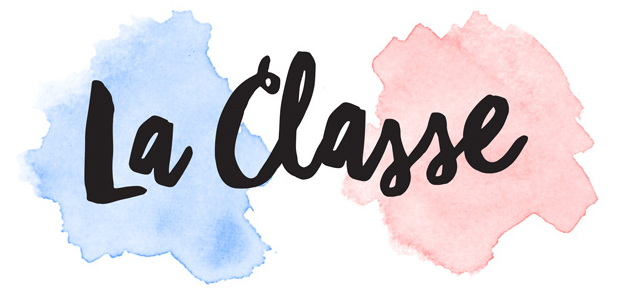I enjoy discovering new places in France and then sharing my experiences with my students as they always ask me for advice about places to visit. I am lucky to know many parts of France as I have family all around. However, there was one place I had never been to : The French Basque Country. So I organised a walking trip along the Basque coastal path from Biarritz for 5 days. I discovered a wonderful contrasting landscape and was able to marvel at the sea on one side and the mountains on the other.
Visiting Biarritz
I started my walk in the north of Biarritz from the plateau of the lighthouse, then I continued on Plage* Miramar (*beach) and the Grande plage.
Plage de Miramar
Biarritz lighthouse by night
I visited the Rocher du Basta and the fishermen's port where you can see the typical and colourful huts “les Crampottes”. The fishermen use them to store their equipment. I went to the Plateau de l'Atalaye and finally to the esplanade and the Rocher de la Vierge. I really liked the little beach of Port Vieux, enclosed between the rocks. I continued on the beach of the Côte des Basques, a beach popular with surfers. Finally, I went back up through a magnificent little park that runs the full height of the cliff. The scent of the Japanese pittosporum tree, reminiscent of jasmine and orange scents, accompanied me throughout my walk in Biarritz.
Tips: Go to Etxeko bistro, 1 Pl. Sainte-Eugénie for your lunch
Typical and colourful huts “les Crampottes”
Japanese pittosporum tree
Walking the Basque coastal path "Talaia"
The next day, I walked to Bidart to take the Basque coastal path "Talaia". There were many magnificent views, especially the view of Mount Jaizkibel which is the westernmost mountain in the Pyrenees, and the view of Saint-Jean-de-Luz from the Pointe de Sainte-Barbe .
I spent two days in Saint-Jean-de-Luz. The Grande Plage is accessible from the town centre, (I even had a swim in the sea!) This beach offers a breathtaking view over the bay. You can go for a walk in the pedestrian street and enjoy a delicious ice cream from Amorino (11 Rue Léon Gambetta) but I also recommend you to stroll in the small adjacent streets which are less busy and where you will find typical houses which are characterised by their whitewashed walls and their red wood timber frames.
Did you know that Louis XIV and the infanta María Teresa of Spain were married in the church of St John the Baptist?
Tips: Toki Goxoa, 7 Galerie La Pergola, is a small restaurant by the beach where you can try a taloa, the traditional corn tortilla; La Maison AMA (cocktail/tapas restaurant) & le Bar Basque, are two lovely restaurants on Boulevard Thiers; Visit the Art Gallery Luz 26. I was lucky to see a wonderful collages exhibition. Denis Janneau shared with me the story of each artist. It was fascinating.
Saint-Jean-de-Luz
Port of Saint-Jean-de-Luz
Typical houses in Saint-Jean-de-Luz
Discovering the beautiful long beach of Hendaye
My next destination was Hendaye. I arrived at the train station Les deux Jumeaux (Les deux Jumeaux - the two twins - are two huge pink limestone rocks, facing the cove of the same name.) I walked along the Grande Plage, which is several kilometres long, right on the Spanish border. Hendaye seems to be a fairly quiet town which mainly attracts tourists for its long beach.
La Grande Plage et les deux Jumeaux
Le port de plaisance d’Hendaye
A day trip to Spain
From Hendaye, it is possible and recommended to make a trip to Spain to the town of Hondarribia, a beautiful fortified village. To go there, take the small boat in Hendaye’s port and visit the old part of Hondarribia.
Tips: Cafetería Ttopara for a coffee and cakes
Short boat trip to Hondarribia
View of Hendaye from Hondarribia
Arma plaza, Hondarribia
Nagusi Kalea
What are the gastronomic specialities of the Basque Country?
Here are a few :
Le jambon de Bayonne (ham) is a specialty of Adour. It is a ham that is eaten in thin slices, it melts in your mouth and is not very salty.
Espelette chilli pepper is a variety of chilli pepper that came from Mexico and was introduced to the Basque Country in the 16th century by the Spanish navigator Juan Sebastián Elcano from Getaria. The plant was first used in medicine and then, very quickly, as a substitute for black pepper, a condiment and a meat preservative. In 1650, peasants began to grow chillies in Espelette, a village in the Labourd region;
The Basque cake is a typical cake traditionally filled with black cherries, or almond or rum/vanilla custard.
Jambon Serrano Basque (not as fat, drier and less tender than Bayonne ham)
Taloa, traditional corn floor tortilla
Rabas de calamar
Basque pelota
The Basque also have their own sport called Basque pelota. It is a group of ball games derived from the game of paume. The game consists of sending the ball, either on the fly or after a rebound, to a main wall, called a fronton, so that it falls on the playing area called a cancha. The game continues until a team commits a foul or fails to throw the ball again before the second rebound.
Olympic Games, 1900
Basque Language
Let me finish with three words in the Basque language “euskera” that you can use if you visit this wonderful region :
Egun on - Hello
Eskerrik asko - Thank you
Agur - Goodbye



















